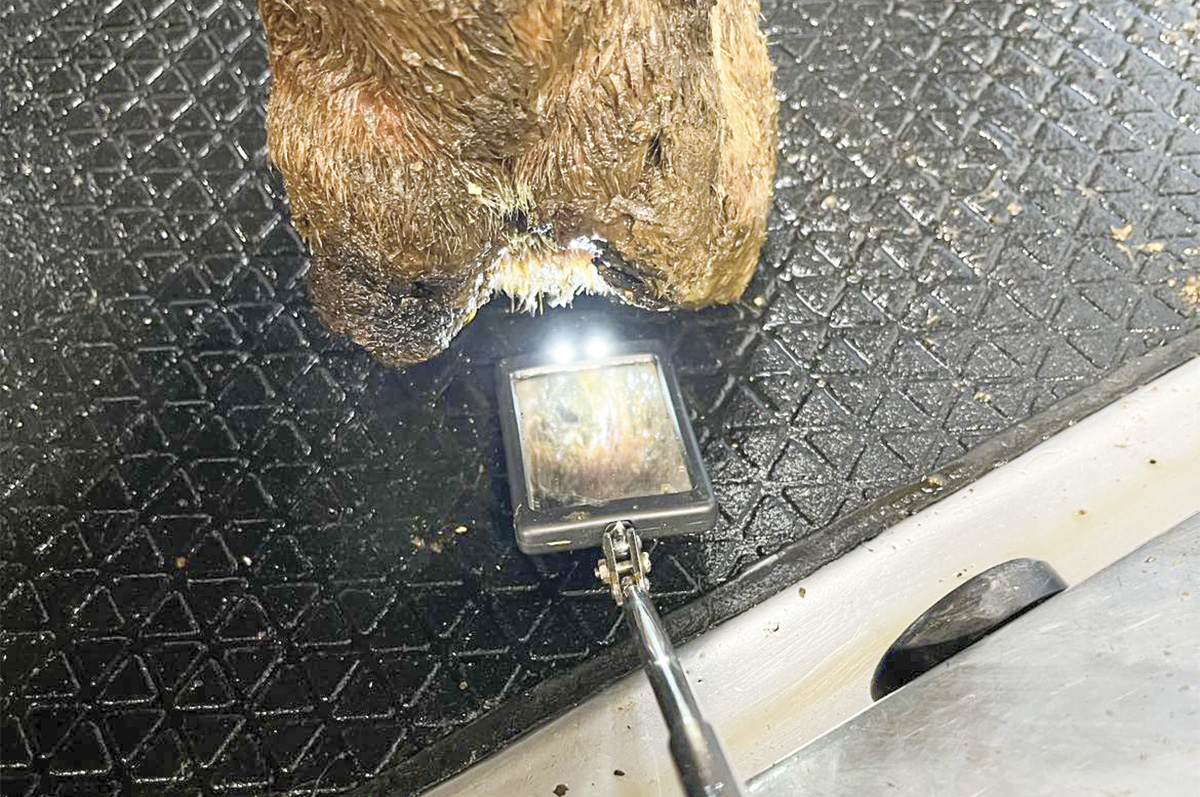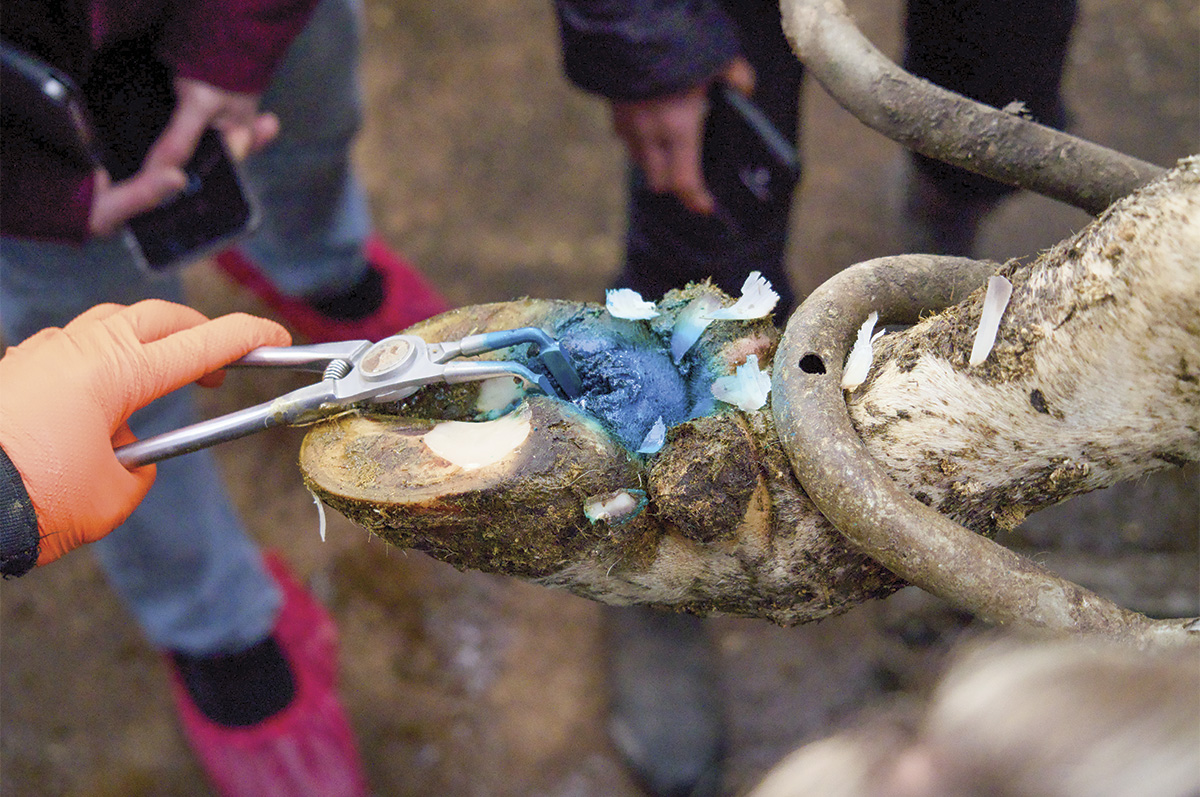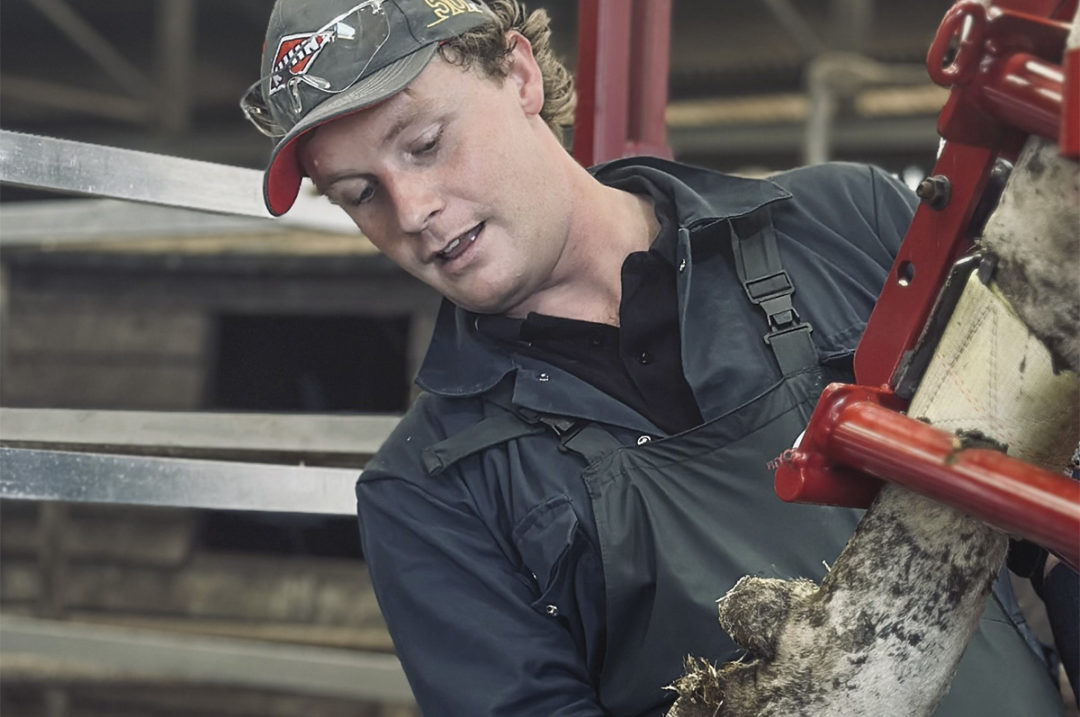Severely lame cows are easily distinguishable in the herd, even to the untrained eye. The cows may walk with a clear limp in their gait, a lesion may be noticeable, and the cows may exhibit poorer reproductive and production performance compared to their healthy herdmates. By the time lameness is this noticeable, it is too late.
The key is to work with the farm team in identifying and addressing lameness early. This may be before the lesion is visible until you pick the foot up in the hoof-trimming chute.
“Get the vets, hoof trimmer, feed manager all working around the chute together,” Dr. James Wilson said. “We need to hone in on the subtle signs of lameness in order to achieve real success.”
He described, for instance, a cow that showed subtle mobility challenges, but when the feet are picked up, a substantial interdigital growth is noticed. On top of that is digital dermatitis (DD), indicating a severe lesion even though the cow failed to show obvious signs of it in her gait.
Wilson is a hoof health consultant for Herd Health Consultancy and presented “Digital Dermatitis Control: A farm/cow sensitive approach” during a Knowledge Nook session at World Dairy Expo in 2023.
The development of an infectious lesion, such as DD, is a costly one to the global dairy industry with its prevalence in developed dairy systems at 40% to 50%, Wilson stated; yet, with proper hygiene, this disease is incredibly manageable.
“DD typically happens because of poor hygiene and a compromise to skin integrity,” Wilson said. “Then, the family of bacteria that cause DD spiral and burrow into the skin. They live in the skin, developing further and shedding.”
Wilson noted that before the bacteria become present, there must be a compromise of the skin.
“For example, slurry sticks to the skin and breaks down the skin’s capacity to act as a barrier,” he said. “With that, skin loses its ability to defend from the outside world. Following this, the bacteria causing DD infect the foot and a lesion develops."
On average, it takes 130 days from an initial infection until a visible lesion has formed.
“We can see flare-ups of DD when footbath solution is changed. It is important to remember the footbath doesn’t treat the lesion, it just prevents the spread of it,” Wilson said. “A lot of the time we accept failure by managing cows with chronic dormant lesions. These will still be uncomfortable for the cow and are described as the super-spreader lesions.”

An under-car inspection mirror with a light can be used in the parlor to identify cows that have digital dermatitis. The foot needs to be cleaned before this can accurately take place. Photo provided by James Wilson.
Tools to screen for the early detection of DD in the herd
- Parlor scoring: Hose off feet and use an under-car inspection mirror to screen the herd; build this into a regular routine (e.g., quarterly).
- Mobility scoring: Have a veterinarian or veterinarian technician speak with employees about what to look for in lame cows, and find an easy way of reporting them. Make use of a fortnightly session where every two weeks a member of the team is purely watching the cows pass down the return lane, noting any that would benefit from a foot check.
- Technology screening: Various artificial intelligence tools are in development now and have a promising future, including in the parlor and in footbath cameras.
“The reason for picking up DD early is because our treatments are so much more effective when we do this,” Wilson said. “EDPET, early detection, prompt effective treatment, is a critical part of managing DD on-farm.”
On farms that Wilson works with, they follow a farm-sensitive approach to managing DD and lameness as a whole. This includes creating low-infection environments through improved hygiene in the herd and biosecurity on the farm, primarily with proper footbath protocols for milking cows, dry cows and youngstock.
“Improving DD is improving hygiene in the most straightforward way,” Wilson said. “It’s all about keeping the foot clean and keeping the environment clean.”
The key to a proper footbath is design. Sloped walls along the side encourage good cow flow, and the appropriate length ensures each cow gets an adequate number of immersions through the solution.
“I love putting curbs or steps that cows need to step over to get into the footbaths to get immersions beginning with that first step,” Wilson said. “It’s also an easy means to get more immersions in shorter footbaths.”
Wilson recommended footbaths be 12 feet long with sloped sides and a minimum of a 5-inch depth for the solution. A translucent drum to hold the solution allows producers to know how much water and chemical are in the footbath. Automation is also a great tool for making sure that footbathing is delivered consistently across the herd and reduces associated labor costs.
The solution should be changed at regular intervals. This will depend upon the footbath, but a good rule of thumb is that a [50-gallon] footbath should be changed every 200 cows as long as depth is maintained, Wilson advised.
“Footbathing is a disinfection protocol,” Wilson said. “It won’t treat DD, so you really have to focus on adequate disinfection.”

Using reversible pliers when treating digital dermatitis allows for topical treatments to be applied thoroughly. The approach should be to clean and dry the lesion, apply treatment and then reapply if it is a spray application. Photo provided by James Wilson.
Wilson also noted blitz treatments to treat DD in individual cases. This is done by applying a topical antibacterial treatment to the lesion in the hoof-trimming chute once it is cleaned and dried. This foot is then marked and sprayed again for two consecutive days in the parlor. This needs to be followed up with a footbath schedule that reduces infection pressure.
“Large herds have a 1 percent to 2 percent prevalence of DD because they are treating effectively and managing the footbath correctly,” Wilson said. “We can manage it out of the herd.”






